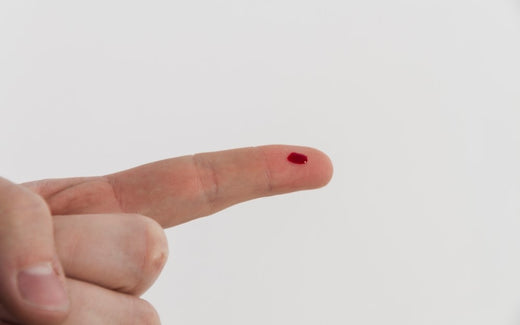The original article was provided by Greiner Vacuette.
Introduction:
In contemporary medicine, capillary blood collection is gaining popularity as a specimen material due to its simplicity and minimally invasive sampling procedure. This method is particularly beneficial for various patient groups, offering advantages such as reduced blood volumes, quicker test results, and lower risk of complications¹. However, maintaining the quality of capillary blood samples is crucial for obtaining reliable test results.
The Importance of Capillary Blood Collection:
Capillary blood sampling is vital, especially for paediatric patients, individuals with specific health conditions, and those who self-test for parameters like glucose. The success of this method relies on several key steps, including selecting the puncture site, choosing the appropriate lancet, using micro-collection devices, and executing the skin puncture with precision³.
Challenges and Limitations:
Despite its advantages, capillary blood sampling comes with inherent challenges that can lead to inaccurate test results. Factors such as the composition of capillary blood, potential contamination, and differences between venous and capillary blood analyte concentrations should be considered to ensure the reliability of diagnostic outcomes⁴ .
Recommendations for Successful Capillary Blood Collection:
To achieve high-quality capillary blood collection, awareness of potential limitations is crucial. Proper handling techniques, adherence to safety standards, and careful consideration of order of draw and filling are essential steps in minimizing the risk of false test results. Ensuring that workstations are adequately equipped, supplies are within their shelf life, and proper labeling is performed according to required tests and additives are key preparatory measures².
Procedural Steps for Capillary Blood Collection:
- Equip workstations adequately before sampling².
- Follow safety standards and guidelines for blood sampling devices⁴.
- Take necessary precautions, including hand disinfection and patient identification².
- Select and label the appropriate capillary blood tube for the requested tests².
Warm the puncture site if necessary, considering arterialisation for specific analyses³.
- Perform the skin puncture using a retractable incision device³.
- Wipe away the first drop of blood, except when required for specific testing¹.
- Collect capillary blood, following the recommended order of draw for multiple samples¹ ³.
- Cap micro-collection devices immediately to prevent exposure to air⁴.
- Mix capped samples gently to prevent clotting, following manufacturer recommendations¹ ³.
Conclusion: Capillary blood collection is a valuable method in modern medicine, offering advantages for various patient groups. By understanding the challenges associated with this technique and implementing recommended practices, healthcare professionals can ensure high-quality capillary blood samples, leading to accurate and reliable diagnostic outcomes.
[SEE GREINER VACUETTE® MINICOLLECT® CAPILLARY BLOOD COLLECTION SYSTEM]
References:
1 Clinical and Laboratory Standards Institute (CLSI). Procedures and Devices for the Collection of Diagnostic Capillary Blood Specimens; Approved Standard-Sixth Edition, Clinical Laboratory Standards Institute, Wayne, Pennsylvania, USA, 2008.
2 Rat der Europäischen Union. Richtlinie 2010/32/EU des Rates vom 10. Mai 2010 zur Durchführung der von HOSPEEM und EGÖD geschlossenen Rahmenvereinbarung zur Vermeidung von Verletzungen durch scharfe/spitze Instrumente im Krankenhaus- und Gesundheitssektor. Amtsblatt der Europäischen Union. 1. Juni 2010;L 134(53):66–72.
3 Lenicek Krleza J, Dorotic A, Grzunov A, Maradin M. Capillary blood sampling: national recommendations on behalf of the Croatian Society of Medical Biochemistry and Laboratory Medicine. DOI: 10.11613/BM.2015.034, Biochem Med 25(3):335–58.
4 WHO guidelines on drawing blood: best practices in phlebotomy. Gedruckt von WHO Document Production Servis, Genf, Schweiz, 2010. Verfügbar unter: http://www.euro.who.int/__data/assets/pdf_file/0005/268790/WHO-guidelines-on-drawingblood-best-practices-in-phlebotomy-Eng.pdf?ua=1 Abgerufen am 22. Oktober 2016.

